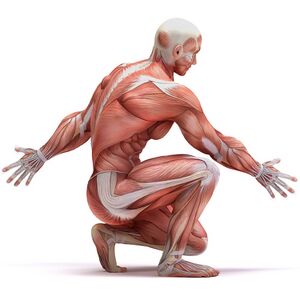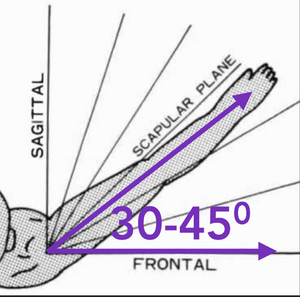Ergonomics for Daily Life
Top Contributors - Nuriena Vang, Sommern Willie, Kim Jackson, Brooke Coleman, Alicia Fernandes, Olajumoke Ogunleye and Cindy John-Chu
Introduction[edit | edit source]
Ergonomics are an important factor when establishing an environment that provides optimal productivity. Three types of ergonomics include cognitive, organizational, and physical. Cognitive ergonomics is centred around the mental aspect that plays a role in ergonomics. Organizational ergonomics pertains to the importance of having a sound structure within a social-technical system. This includes organizational structures, policies, and processes. Physical ergonomics is geared towards ergonomics used in the workplace and deals with musculoskeletal disorders possibly associated with the workplace. Understanding the importance of physical ergonomics contributes to optimizing your approach to day-to-day operations.
Physical Ergonomics[edit | edit source]
Physical ergonomics involves evaluating the human body through its anatomy, physiology, and anthropometry to appreciate structure, motion, function, and performance. These factors contribute to one's body mechanics and posture which can be evaluated and addressed by a physical therapist.
A pertinent question to ask in the application of physical ergonomics…What is the importance of applying physical ergonomics in daily life?
Habits of postural stress, poor posture, body mechanics, and/or even clothing choices over a period of time may lead to musculoskeletal injuries/disorders (MSK disorders).[2] A few common examples of MSK disorders caused by poor habits in the workplace include: low back pain, carpal tunnel syndrome, neck pain, and/or shoulder stiffness.[3]
A concept to consider and appreciate is that the human body does not only move primarily in the sagittal and frontal plane to complete daily activities, but also in the transverse and scaption plane.
For example, a cashier might coordinate a slight twist of their trunk to grab groceries to scan and then bag the items while a stocker might twist their trunk and move in the scaption plane to restock pasta boxes on a shelf. Setting the human body in a position that optimizes movement would be critical to reducing the chances of developing MSK disorders. Below are a few examples of daily activities with consequences that may lead to MSK disorders and how we can refine those activities.
Ergonomics of Daily Life[edit | edit source]
Driving:
Technique to improve: adjust mirrors, lift seat at the right height, backrest adjustment, headrest position [5]
Consequences: poor vibration attenuation, poor postural support leading to hunching, increased stress and headaches
Bathroom hygiene:
Technique: Position toiletry items where they are easily accessible, check the lighting in the bathroom, and adjust the height of the sinks .[7]
Consequences: Neck & back pain, falls / injuries.
Typing and computer work:
Technique: Ergonomic keyboard, standing desk, proper postural orientation, taking breaks.
Consequences: Neck pain, tension & stress, carpal tunnel syndrome.
Phone:
Technique: Neutral spine alignment, limiting time and messaging, increasing voice commands, taking persistent rest breaks, avoiding holding the phone below chest height. [8][9]
Consequences: neck pain and ache, tension & stress, aching in the fingers, visual strain and headaches.
References[edit | edit source]
- ↑ Human Body: Muscular System Review | Carolina.com
- ↑ PainScience. Does Posture Matter? A detailed guide to posture and postural correction strategies (especially why none of it matters very much). Available from: https://www.painscience.com/articles/posture.php (accessed 2 April 2022).
- ↑ Samad, M. A. Ergonomics and the Prevention of Musculoskeletal Strain and Back Injuries. International Journal of Engineering and Advanced Technology (IJEAT). 2017;6:40-43.
- ↑ Reinventing the Shoulder - Blog (core advantage.com.au)
- ↑ US Department of Agriculture: Animal and Plant Health Inspection Service. Driving Ergonomics. Available from: https://www.aphis.usda.gov/aphis/ourfocus/emergencyresponse/emergency_management/ergonomics_program/driving-ergonomics#:~:text=Driving%20ergonomics%20has%20an%20overall,sitting%20and%20standing%20jobs%2Factivities (accessed 13 April 2022).
- ↑ Brooke Coleman. Driving Ergonomics. Available from: https://www.youtube.com/watch?v=DjviJ9MNxdI [last accessed April 18, 2022]
- ↑ Modobath. How an Ergonomic Bathroom Can Improve your Health. Available from: https://www.modobath.com/inspiration/how-an-ergonomic-bathroom-can-improve-your-health/ (accessed 13 April 2022).
- ↑ UCLA Health. Ergonomic Tips For The Use Of Hand-Held Devices. Available from: https://www.uclahealth.org/safety/Workfiles/Ergo-Tips-Hand-Held-Devices.pdf (accessed 13 April 2022).
- ↑ PhysioAdvisor. Mobile Phone Ergonomics. Available from: https://physioadvisor.com.au/health/ergonomics/mobile-phone-ergonomics#:~:text=Try%20to%20maintain%20the%20phone,body%20with%20the%20neck%20rotated (accessed 13 April 2022).








